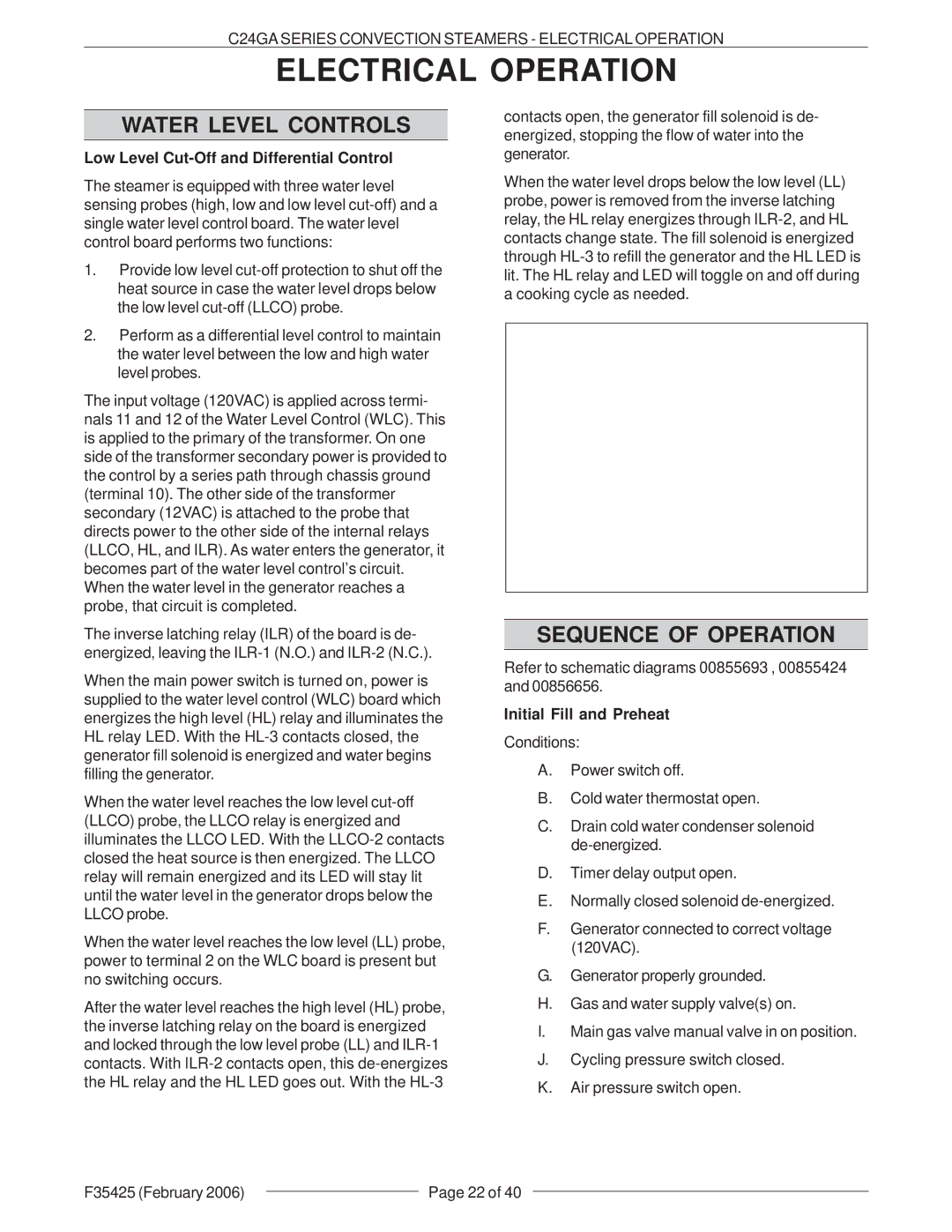C24GA6 ML-136021, C24GA10 ML-136022, C24GA6, C24GA10, ML-136021, ML-136022 specifications
The Vulcan-Hart C24GA series is renowned in the commercial kitchen industry for its high-quality performance and efficient cooking capabilities. This series includes models C24GA6 and C24GA10, which are designed with versatility and reliability at their core. These models cater to a wide range of culinary demands, ensuring that chefs can prepare a variety of dishes with ease.The C24GA6 features six powerful burners, providing ample cooking space and heat output for busy kitchens. Its robust construction ensures durability, while an easy-to-clean stainless steel exterior makes maintenance hassle-free. The burners are designed for quick ignition, and the adjustable flame control allows for precise temperature adjustments, ideal for simmering sauces or achieving the perfect sear.
On the other hand, the C24GA10 model is equipped with ten burners, making it suitable for larger establishments that require additional cooking power. Similar to the C24GA6, it incorporates seamless stainless steel components and a design that meets the rigorous demands of a professional kitchen. Both models boast a high BTU output, ensuring that meals are prepared quickly and efficiently, which is essential during peak hours.
The C24GA series also integrates advanced technologies that enhance its functionality. The burners utilize a standing pilot ignition system, ensuring a reliable start-up every time. This technology minimizes downtime and allows chefs to focus on cooking rather than troubleshooting equipment.
In addition to the C24GA series, Vulcan-Hart offers the ML-136021 and ML-136022 models, which complement the cooking arsenal in any kitchen. These models are expertly designed to provide the same level of reliability and performance. They follow the same principles of durability and ease of maintenance that Vulcan-Hart is known for.
The ML-136021 and ML-136022 models feature streamlined designs that fit seamlessly into any workspace. With efficient heat distribution and user-friendly controls, these models are perfect for both experienced chefs and culinary students alike.
Together, the Vulcan-Hart C24GA6, C24GA10, ML-136021, and ML-136022 models represent a comprehensive cooking solution that meets the varied needs of commercial kitchens. With their powerful burners, durable construction, and advanced technologies, these units ensure top-notch performance and efficiency for all cooking requirements.

